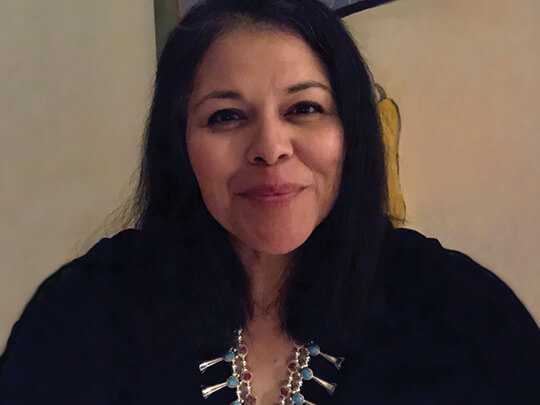Working Together, We Can Make Progress

National Native HIV/AIDS Awareness Day (NNHAAD) offers an opportunity to reflect on our ongoing challenges, chart a course for a better future, and call on my colleagues to make Native populations an active partner in their HIV work.
For more than 20 years, I have worked in advocacy roles that uphold trust and treaty obligations to tribal nations, including the provision of health care to American Indians and Alaska Natives. Many of our communities’ longstanding challenges, including access to health care and resources, unique geographical and cultural differences, and overarching health disparities, including HIV, still exist.
HIV-related disparities don’t happen in isolation. They are connected with other factors, including poverty, lack of access to quality education, and lack of affordable housing, which have been made worse by a lack of consistent funding for the Indian health system and Native serving community-based organizations. With 4,000 American Indian/Alaska Native individuals living with HIV in the U.S. according to the CDC, more needs to be done.
As with many health conditions, understanding the impact of HIV in our communities begins with good data and information. All of our Native communities need accurate, accessible, and actionable HIV information that is culturally tailored by and for Natives. The geographical distances, cultural differences, and sheer number of our 574 tribes mean there is no “one size fits all” approach.
We all have a role to play in advancing HIV prevention, diagnosis, treatment, and response within Native communities. The federal government can improve its data collection to better account for HIV among Native populations and ensure that no community feels invisible in our effort to end the HIV epidemic. Federal agencies and national organizations can give us a seat at the table and a voice in the conversation, so we are an active part of the solution. We should all fight against complacency and remember that health disparities are not a given. COVID-19 has shown us that health disparities have wide-reaching consequences and highlighted the opportunity to fulfill the unmet promises of access to quality health care and healthy communities.
At the Northwest Portland Area Indian Health BoardExit Disclaimer (NPAIHB), we meet the HIV needs of the Northwest tribes – and tribes across Indian Country – by using a holistic approach of eliminating health disparities through culturally appropriate, high-quality programs. We are developing and strengthening protective spaces with our Two Spirit and LGBTQExit Disclaimer+ communities. The programs we are helping to develop are separate from HIV programs and instead put energy and emotion around affirming Two Spirit and LGBTQ+ people, traditions, and health. Through the Healthy Native YouthExit Disclaimer program, our extensive research with Native teens and young adults informs the campaign’s work to address the social, structural, and environmental stressors that influence adolescent health, including HIV and sexual health.
Today, I’m calling on all of us working in prevention and care to tailor our strategies, tools, and best practices to reflect the diversity of our audiences, including Native communities. We must do a better job connecting patients to needed resources and taking a holistic approach to overcoming barriers to care, such as providing access to interrelated services like transportation and counseling. We should all work to create safe environments by encouraging healthcare providers to engage patients in nonjudgmental care.
As part of NNHAAD, I also want to encourage American Indian, Alaska Native and Native Hawaiian people to know their HIV status, not only for themselves but also for their communities, and future generations. Get tested and, for added privacy, explore HIV self-testing kits. If you have HIV, get the care you need. Use the HIV.gov services locator to find care options near you.
While many of the past’s challenges are still with us, there are also encouraging signs of change ahead. I have seen an increased focus on addressing the health of Native communities, including HIV prevention, treatment, and care. Serving as part of the Presidential Advisory Council on HIV/AIDS (PACHA), I have a seat at the table to voice the needs and concerns of Native communities. Minority HIV/AIDS Fund in Action (MHAF) funding has supported much of the Indian Health Service’s HIV prevention and care programming, including the National Native HIV NetworkExit Disclaimer and the Cherokee Nation’s EHE Pilot Project. The Ending the HIV Epidemic: A Plan for America (EHE) initiative has opened the door to additional funding opportunities to reach our shared goal of ending the epidemic in the U.S. by 2030.
On NNHAAD, let’s all commit to doing more. If we fully engage our Native communities in our HIV work, we can create solutions that make a meaningful difference. Working together, we can make progress.